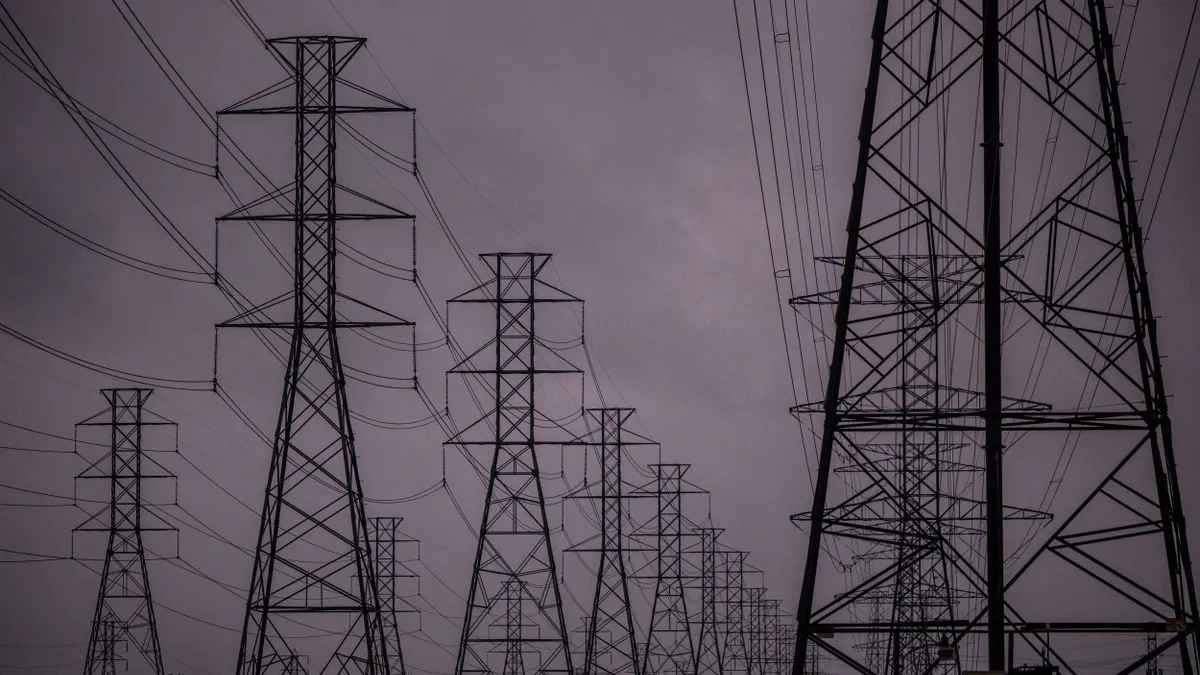In June, California utilities will tap winning bidders in the state's second demand response auction mechanism (DRAM). The distributed resource sector will be watching to see how much capacity is procured, at what price and from which sectors.
But aside from broad revelations, there are limits to what insight a California auction can yield for aggregators in PJM, or commercial load in MISO.
“New regulatory constructs at both the wholesale and distribution levels are developing to account for and optimize investment and use of both traditional DR and new distributed resources,” GTM Research noted in the first of a new series of reports. The firm has published a few slides from the report, predicting that "transitioning to a next-generation energy system with increased penetration of DERs requires market evolution that follows technology at the grid edge."
GTM's report series will focus on demand response aggregation, of which California's DRAM results will be a perfect example. But if one thing is clear from GTM's new series, the differences in how each wholesale market operates means West Coast lessons might not translate perfectly.
"Different evolutionary paths have created subtle but important differences between the approaches ISOs and RTOs adopt in incorporating DR resource services for various system needs," the report concludes. And the aggregation of a wide range of smaller resources, in the form of both generation and demand reduction, means a complicated energy mix must be managed alongside rules which can change quickly.
“You can't get to deeper details unless you understand at the high level how each of these programs work,” said Elta Kolo, the report author and grid edge analyst for GTM. But the sector moves quickly; even since issuing their first report, "there have been changes that will certainly impact RTO performance in the coming years,” she added.
Perhaps the biggest shift is that what is now being touted as "demand response" is fast becoming a hybrid demand management tool.
“It's not just load modification, it's also behind-the-meter generation,” Kolo said. “This is in line with what's going on in the industry right now. We're seeing a lot more activity at the distribution level, a lot more aggregation there, and it is impacting the higher levels of the grid, and of course the wholesale markets.”
Behind-the-meter generation is increasing in size, while individual load reductions are getting smaller.
“It's a challenge and an opportunity. You can't just look at one aspect. The smaller resources open up the residential sector, which previously was this black box," said Kolo. "But now you can aggregate various resources to a volume that can be bid into a market. And you have small niche companies that are doing this, looking at very specific markets.”
Integrating smaller players
California is a good example of a market working quickly to integrate demand response into wholesale markets. The state's bifurcation proceeding will have utility demand response programs merged into the California ISO's operations by 2018. And through a demand response proxy product, aggregators are now competing for a second time to bring smaller, diverse resources online.
The state's first DRAM auction was a success, with the three major utilities acquiring about 40 MW of capacity, roughly double the minimum set by the state. “I'm very interested to see what is going to happen in the upcoming auction, to see if there will be another doubling, to see the folks participating," Kolo said.
According to Olivine, which is managing the auction, Pacific Gas and Electric, Southern California Edison and San Diego Gas and Electric will seek 40 MW, 28 MW and 28 MW, respectively.
Overall, residential capacity made up about a third of the accepted capacity offers in the first DRAM auction, opposed to the 20% target set by the state. That shift is being driven by “smart metering penetration, and having folks interested in getting into that niche market," Kolo said. "You're not going to have EnerNOC going into the residential sector. Not everyone wants to be EnerNOC," she said, referring to the DR giant's scope, which reaches into most of the organized wholesale markets.
Success in aggregation comes down to "looking at case-specific solutions," Kolo said.
Opportunities in small business offerings
There are more than nine million demand response participants across the country, and roughly 90% of those are residential. Industrial customers provide the greatest potential reductions; despite making up a small fraction of demand response participants they comprise more than half of about 31 GW in potential peak savings. But with average annual payments close to $10,000 for industrial demand response participants, many know what programs are available.
"There's only so many C&I customers you can attract, at the end of the day," she said. "Folks are looking for a more diversifed portfolio, because at the end that should make you more competitive."
Bringing on a wider range of customers could mean it is necessary to change some rules. PJM Interconnection, for instance, has a 100 kW minimum offer while MISO has a 5 MW minimum requirement. Altering the minimums opens up smaller resources, as well as smaller aggregators.
Along with the residential sector, Kolo said the small and medium-sized business sector "is unexplored and another opportunity. They are larger loads than residential loads, very predictable and you can easily provide attractive contracts."
There are also changes to rules which would allow demand response to be used more frequently. "A lot of demand response is not activated for even years at a time," Kolo said, talking about the MISO structure, but warned "as you see more renewable penetration you're going to need more flexibility."
PJM demand response, for instance, is often activated and in its 2017-2018 auction cleared almost 11,000 MW of demand response. MISO's 2016-2017 auction results, announced last month, showed lass than 6,000 MW of demand response—and because of cheap power and market rules, little is expected to be activated.
"Wherever you have an attractive capacity price you're going to attract players across the field," Kolo said. PJM uses a capacity auction to ensure adequate supply, but in MISO, the region's vertically-integrated nature leaves that to states.
"The way the markets are shifting, they are creating rules to activate demand response more often. The way it is right now, demand response is used in emergency events," she said. "But you sort of want it to come in, every market clearing … you're going to see it become more common."





















